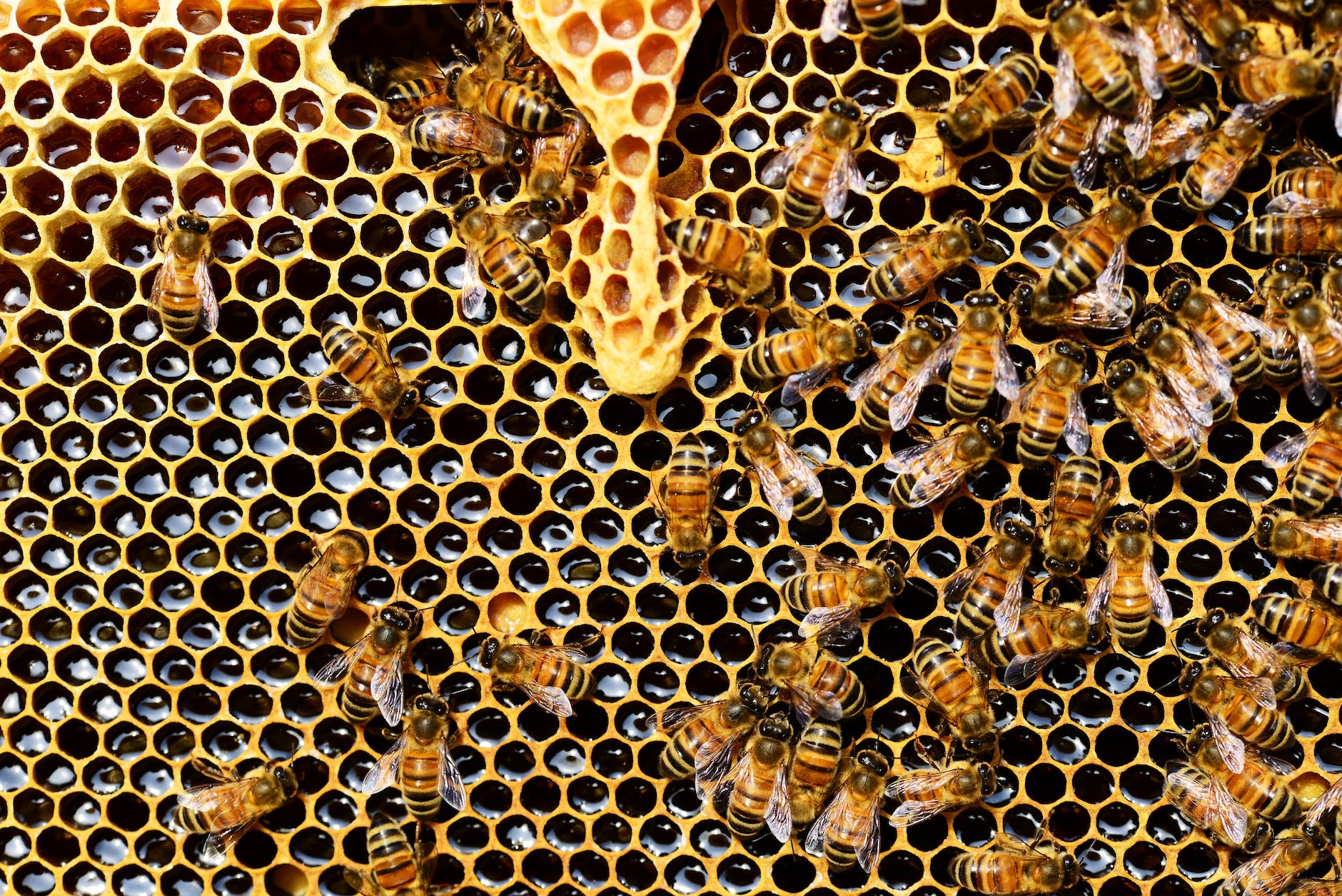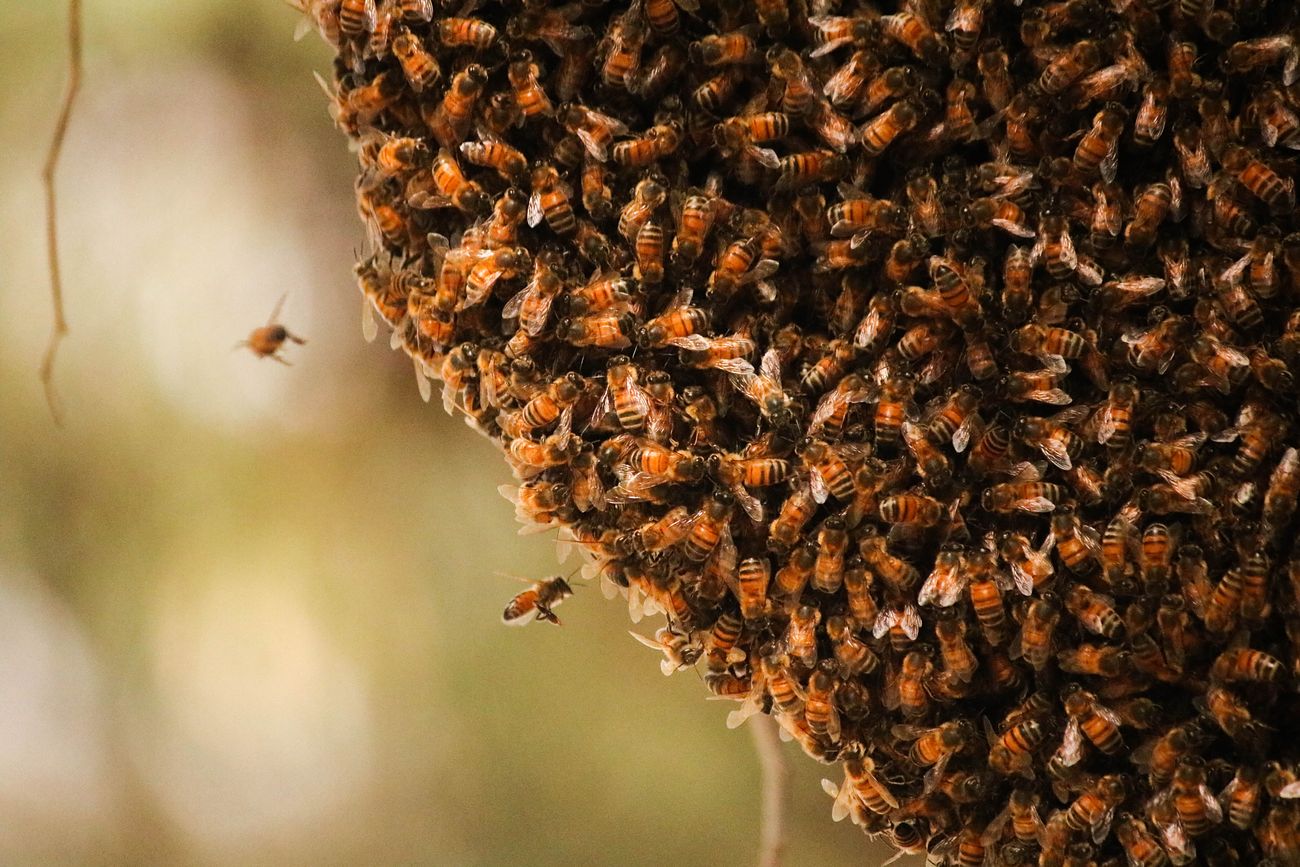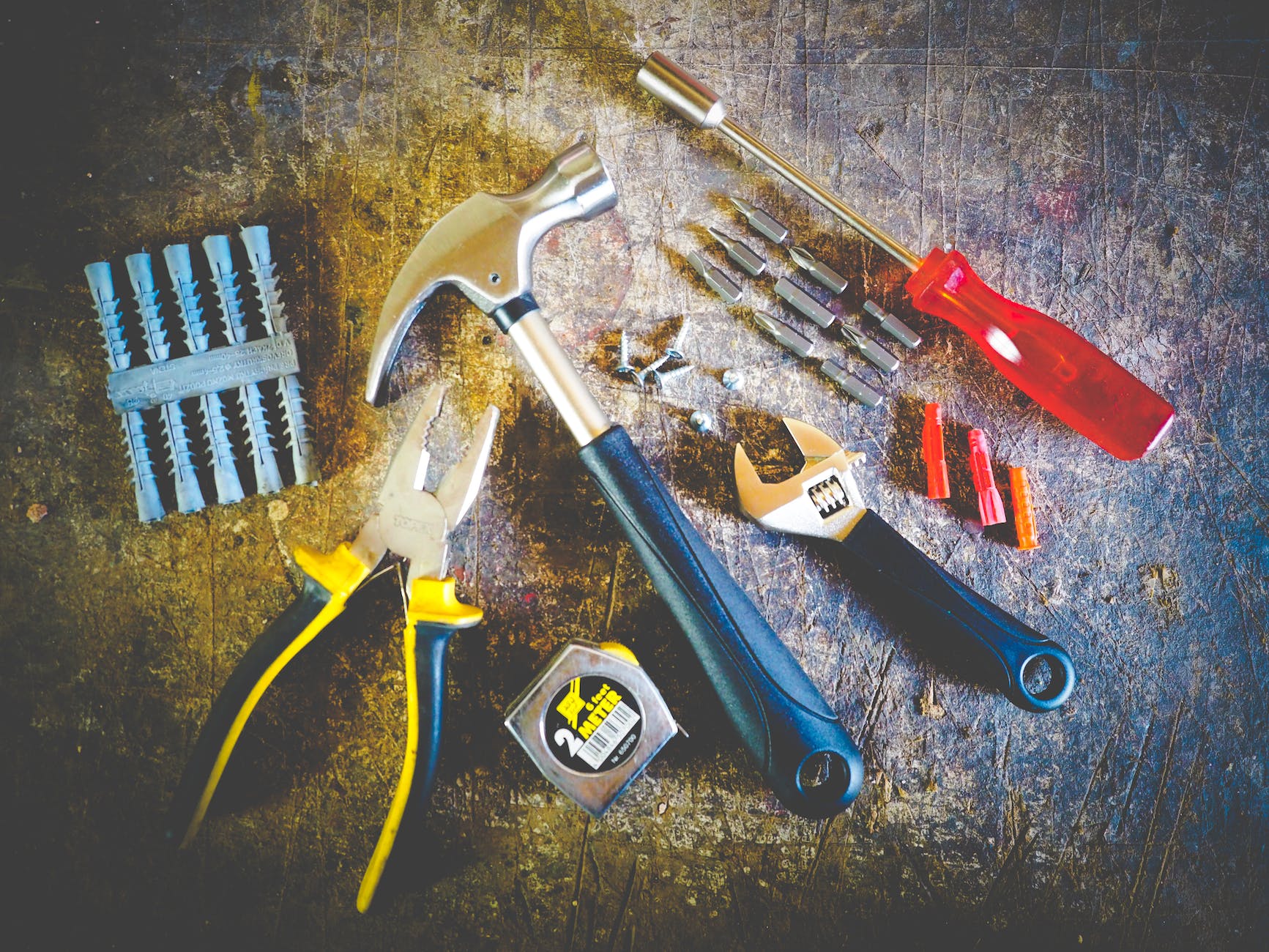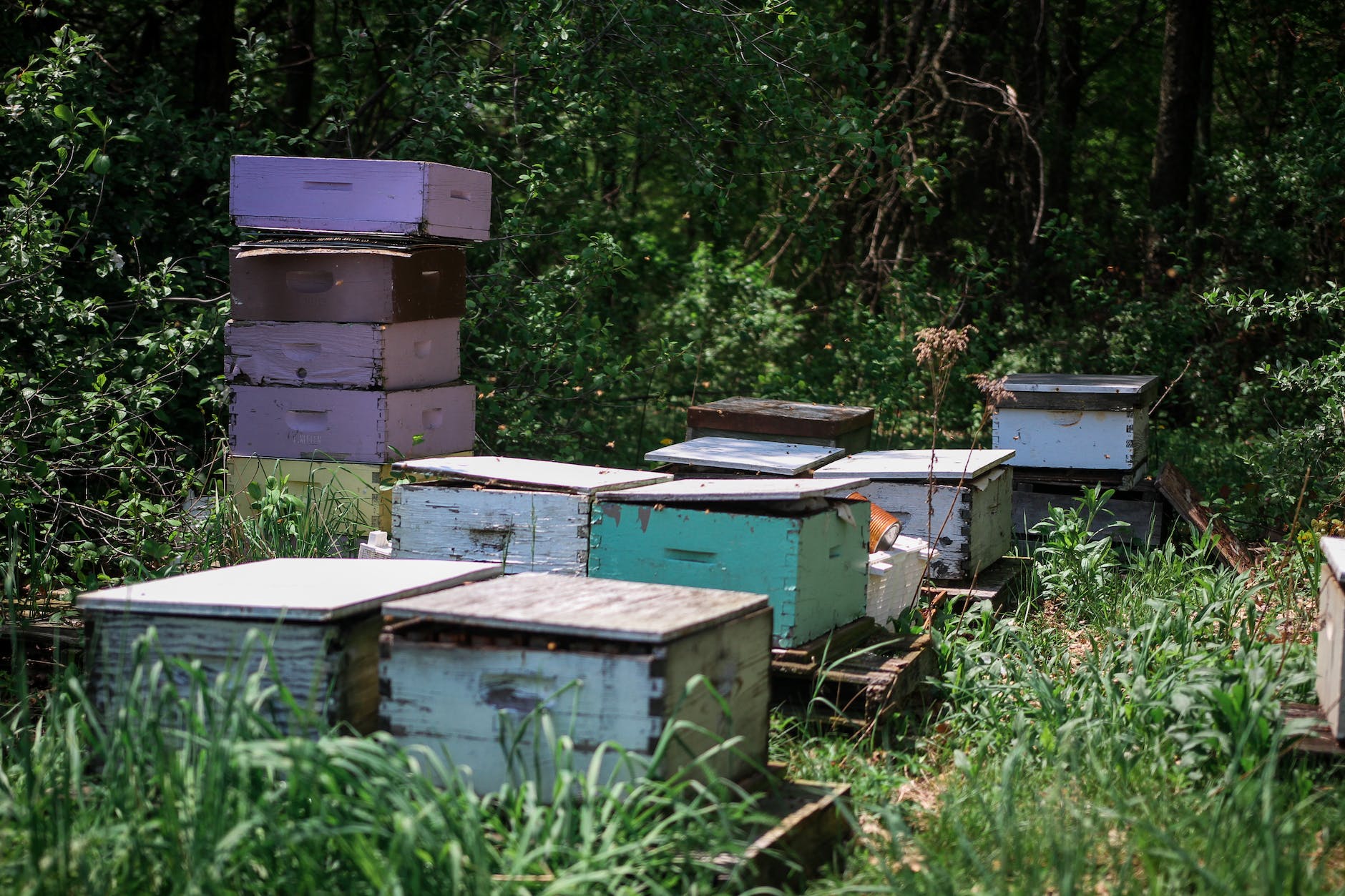As you embark on your beekeeping journey, it’s important to understand what you’re getting into and make an informed decision about whether it’s right for you. The purpose of this page and the linked resources is to provide you with enough information to help you determine if beekeeping is something you’re ready to pursue.
First and foremost, it’s important to note that beekeeping is a lifelong learning experience. Even experienced beekeepers continue to learn new things every day. So, don’t feel discouraged if you don’t know everything there is to know about beekeeping right from the start. The goal of this information is to give you a good foundation to build upon as you continue to learn and grow as a beekeeper.

After reviewing this page you should have a good understanding of the basics of beekeeping. You’ll know what equipment you need, how to choose the right location for your hives, how to care for your bees, and how to harvest honey.
By the end of this manual, you should be ready to take your first step towards building your honeybee colony. You’ll be confident in your decision and eager to get started.
So, let’s dive in and start exploring the world of beekeeping together!
The Journey Starts

Starting a beehive can be a rewarding and fulfilling experience, but it’s important to do your research and make sure you have everything you need before you get started. You don’t want to invest time and money into setting up a beehive only to find that you don’t have what it takes to sustain a healthy colony of bees.
There are several key factors to consider when starting a beehive, and it’s important to make sure you have everything you need before you get started.
Here are the most important things to consider include
- A suitable location for your beehive: Bees need a safe and secure place to live, and it’s important to choose a location that meets their needs. You’ll want to consider factors like sunlight, wind, and proximity to other sources of food and water.
- The right equipment: Beekeeping requires a variety of specialized equipment, including hives, protective clothing, tools, and more. Make sure you have everything you need before you start, so you can provide the best possible care for your bees.
- Knowledge and experience: Beekeeping can be challenging, and it’s important to have a good understanding of what you’re getting into before you start. Make sure you’re familiar with the basics of bee biology, behavior, and care, so you can provide your bees with the best possible care.
- Time and patience: Beekeeping requires time and patience, and it’s important to be prepared for the long-term commitment involved. You’ll need to spend time caring for your bees, monitoring their health, and harvesting honey, among other things.
By considering these factors and making sure you have everything you need before you start, you can help ensure that your beehive is successful and that you enjoy many years of fulfilling beekeeping.
When is the best time of year to start?

The best time to start a bee hive colony varies depending on the specific region, but in general, spring is the most favorable time to start a colony in both the Northern and Southern Hemispheres.
In the Northern Hemisphere, including the United States, Canada, and Europe, spring is from March to May. During this time, the weather is mild, and the flowers are in bloom, providing an ample source of food for the bees. This makes it the ideal time for bees to start building their colony and for new beekeepers to introduce a colony to their hives.
In the Southern Hemisphere, including Australia, South Africa, and South America, spring is from September to November. During this time, the weather is mild, and the flowers are in bloom, providing an ample source of food for the bees. This makes it the ideal time for bees to start building their colony and for new beekeepers to introduce a colony to their hives.
In both hemispheres, starting a colony during spring provides the bees with enough time to build up their population and stores of honey before the onset of winter. This helps to ensure the survival of the colony over the winter months.
It’s important to note that while spring is the best time to start a bee hive colony in both hemispheres, it is possible to start a colony at other times of the year, as long as the proper conditions are met. Before starting a colony, it’s always a good idea to consult with a local beekeeping expert to get specific advice for your region.
Preparation and Planning in the Fall

Starting your beekeeping journey requires preparation and planning, and it’s important to understand the beekeeping calendar and honey harvesting seasons that will influence the timing of your introduction to beekeeping.
Honey Harvesting Seasons: Honey is typically harvested in the summer or early fall, depending on the region. Knowing the timing of the honey harvest season in your area is important, as it can affect the timing of when you introduce your bees to their new hive and habitat.
Keeping a Beekeeping Calendar: There is a specific beekeeping calendar that you should keep track of, which includes important dates and activities throughout the year, such as when to inspect your hives, when to treat for pests and diseases, and when to harvest honey.
Preparing for Beekeeping: To ensure that you are ready to start your beekeeping journey, we recommend that you begin your preparation in the fall. This will give you plenty of time to learn the basics of beekeeping, take a beekeeping class, develop a plan and calendar, talk with your local beekeeping association, and order your beekeeping supplies.
Introduction to Hive and Habitat: Typically, you’ll want to purchase your bees and introduce them to their new hive and habitat in the spring. This allows their pollination efforts to help the local ecology and provides enough time for them to build up their colony and stores of honey before the onset of winter.
By following these guidelines and preparing in advance, you’ll be well on your way to a successful and fulfilling experience as a beekeeper.
You Will Get Stung

Starting a beekeeping journey can be an exciting and rewarding experience, but it can also be intimidating, especially for those who are new to the world of beekeeping. While education is certainly important, the best way to learn is often by diving right in and taking action.
Lack of Experience: Without prior experience, new beekeepers may struggle with proper hive management, including choosing the right location for their hives, maintaining the health of their bees, and ensuring that their bees have access to adequate nutrition.
Fear and Lack of Knowledge: New beekeepers may also experience fear and a lack of understanding when it comes to the behavior and needs of their bees. Without proper knowledge of bee biology, behavior, and care, it can be difficult to provide the best possible care for your bees.
Importance of Education: To avoid these common issues, it’s crucial to invest heavily in your beekeeping education early on in your journey. By taking beekeeping classes, reading books and articles, and seeking advice from experienced beekeepers, you’ll gain a better understanding of the basics of beekeeping and feel much more confident as you begin your journey.
Confidence and Success: With the right education and preparation, you’ll be better equipped to handle any challenges that may arise and be on your way to a successful and fulfilling experience as a beekeeper. So, be sure to invest the time and effort into your beekeeping education, and you’ll be well on your way to a successful and enjoyable experience as a beekeeper.
Overcoming Fear: It’s natural to feel some fear when starting a beekeeping journey, especially when it comes to handling bees and the possibility of being stung. However, the key to overcoming this fear is to get hands-on experience and to start small. You can start by purchasing a small colony of bees and introducing them to a hive of your choosing.
The Importance of Taking Action: While reading books and attending classes can certainly help you gain knowledge about beekeeping, the best way to truly learn is by taking action. You’ll get a hands-on understanding of what it takes to care for a colony of bees and you’ll gain the confidence that comes with experience.
Experience Beats Theory: While it’s important to educate yourself about the basics of beekeeping, taking action and getting hands-on experience will always beat just reading all the books. So, if you’re ready to start your beekeeping journey, don’t be afraid to dive right in and start shaking that first box of bees into your very own hive.
By taking action and diving right in, you’ll gain the hands-on experience and confidence that will help you on your journey to becoming a successful and knowledgeable beekeeper. And soon others will look to you for advice and knowledge.
Rules and Regulations

I am a beekeeper in Texas, USA, and it’s important for me to be aware of the rules and regulations that both my state government and local city government have in place regarding bees and hives. Beekeeping laws can vary greatly from state to state and even from city to city, so it’s important to do your research and understand the specific laws and regulations that apply to you.
The following are some key laws and regulations in Texas:
- Permits: Texas requires beekeepers to register their colonies with the Texas Department of Agriculture. This registration process ensures that the state is aware of the presence of bees in the area, and helps to minimize conflicts with other residents.
- Nuisance Laws: Beekeepers in Texas must take care to ensure that their bees do not become a nuisance to others. If a colony becomes a nuisance, the beekeeper may be required to remove it.
- Disease Management: Texas has strict regulations regarding the management of bee diseases, such as American foulbrood and Varroa mite infestations. Beekeepers must take steps to prevent the spread of these diseases, such as regular inspections and treatments.
- Pesticide Use: Beekeepers must be aware of the use of pesticides in their area and take steps to protect their colonies from exposure. This may include providing alternative forage sources, or moving colonies to a safer location.
- Transportation: Texas requires beekeepers to obtain permits for the transportation of bees across state lines. This helps to prevent the spread of disease and protect the health of bee populations.
Story I’ve read before

It’s extremely important to keep up with the laws and regulations in your region when it comes to beekeeping, as failure to do so can result in serious consequences. This was exemplified in the case of an experienced beekeeper who was fined after pleading guilty to breaching biosecurity laws, including failing to notify authorities of hives infected with American and European foulbrood.
The prosecution stated that although there was no evidence that the foulbrood had spread, the risk was deemed unacceptable. The beekeeper was fined $12,000.00 and his hives were destroyed. This serves as a reminder of the importance of following all relevant laws and regulations when it comes to beekeeping.
In the past, beekeeping was illegal in certain cities, such as New York City, where those caught with illegal hives faced fines of $2,000.00. However, now in almost every US city, beekeeping is now legal. Nevertheless, most cities still require that you register your hives and follow specific guidelines, such as the number of hives you can have per acre, the number of bees you can keep, and the distance your apiary must be from public streets.
To find information about the laws and regulations in your region, you can reach out to your city’s Beekeeping Association, call your state’s Department of Agriculture, or check your government’s website. These organizations can provide you with all the information you need to ensure that you are in compliance with the law and that your beekeeping journey is a successful one.
Beekeeping Laws aren’t complicated

As a beekeeper, it’s important to be aware of the rules and regulations that are in place regarding bees and hives. Beekeeping laws can vary greatly from one region to another, so it’s important to understand the regulations that apply to you.
Neighborhood Considerations: It’s also important to be aware of any rules that your neighborhood may have in place regarding beekeeping. Not everyone is tolerant of bees, and many people have an ignorant fear of these amazing creatures. Some individuals may not appreciate your hive or may have children who are allergic to bee stings.
Building Relationships with Your Community: To avoid any conflicts or misunderstandings, it’s a good idea to talk to your neighbors and let them know about your plans to keep bees. By educating them about the benefits of bees and the honey harvest that you’ll be producing, you may be able to gain some allies and avoid any complaints or disputes.
Compliance with the Law: In addition to building relationships with your community, it’s also important to make sure that you are in compliance with all relevant laws and regulations. This may involve obtaining permits or certificates, or meeting specific requirements for the placement and maintenance of your hives.
By being aware of the rules and regulations in your own region and building relationships with your community, you can help ensure that your beekeeping journey is a long successful one.
Location and Location and Location

Choosing the right location for your bee hives is an important decision in your beekeeping journey. Once you’ve determined how many hives you are legally allowed to keep, it’s time to decide where to place them. Keep in mind that once you’ve installed your bees, you don’t want to move the hives, so it’s important to choose a location that is suitable for your bees.
Easy Access: You should choose a location that is easily accessible, particularly if you plan to spend time in the area. This way, you’ll be more likely to notice if something is wrong with the hives and you won’t have to hike to reach them every time you need to check on them.
Shade vs. Sun: When deciding on a location, consider the balance between shade and sun. Hives in sunlight tend to be more productive, but you don’t want to risk overheating the hives. On the other hand, hives in the shade are more susceptible to mold, diseases, and hive beetles. You should aim to find a middle ground based on the average temperature where you live.
Southeast-facing Entrance: In the Northern Hemisphere, it’s best to place the entrance of your hives facing towards the southeast. This will help keep the hives warm and make it easier for the bees to enter and exit, even on windy days. Additionally, because the sun rises in the east, the heat of the day will wake up the bees earlier, allowing them to have longer, more productive days.
Food and Water Sources: To mimic the bees’ natural environment, you should place your hives near food and water sources that naturally attract the bees. The ideal water source should be shallow, clean, and closest to the hives. The ideal pollination station should be free of pesticides and within six miles of the hives. Both food and water sources should be free from everyday foot traffic.
Educating Your Neighbors: If your neighbors are skeptical about having hives of bees next door, consider sharing information about the benefits of bees with them. Bees have been wrongly villainized in our society, much like sharks, and educating others can help dispel these myths and build understanding. One point to make is if any of your neighbors have gardens, your bees will help their flowers and other vegetation they might have.
Right Tool for The Job

When you first start off your beekeeping journey you will need to gather the very essential “Tools” to perform simple beekeeping tasks. There are many, many different variations of a tool and many other tools that aren’t needed but would be really cool to have. Then you have tools that you don’t need to start but will eventually need to perform other, not so simple beekeeping tasks. In this manual I will only go through the very simple requirements to achieve the job.
So here is my thought, you just spent anywhere from $150 to $300 dollars for a package of bees. Plus the cost of a hive can go from $100 to $700, depending on the type of hive you choose form. These are the very minimum that you need to keep bees. You need bees and a home for the bees, that is all you really need. All other tools are interchangeable and can be replaced with fancy variations with out affecting your beekeeping tasks.
I’m going to assume you have bees and you have a hive. These are not going to be talked about cause, well like I said: That is the very essence of beekeeping. Agree? Good.
The Mighty Hive Tool
The next tool on the list is called a hive tool. I have a construction background so I call this a prybar. You can really use anything that is as strong as a prybar. Look around your house I guarantee you will find a flat metal object you can pry with. In many cases some prybars aren’t even metal, but wood or plastic.
As a beekeeper, it’s important to understand the properties of Propolis, the sticky substance that bees use to build their hives. Propolis, along with honey and pollen, can make it difficult to access the hives and handle the bees.
Why is the Hive Tool Important? The Hive Tool is extremely helpful in installing bees in their hives, checking on the bees, and collecting honey. This versatile tool allows you to pry open the hives and handle the bees and their honey without getting sticky.
Variations of the Hive Tool: Hive Tools come in a variety of shapes and materials, including metal, wood, and plastic. Some have hooks on one end, while others are sharp. There are even some Hive Tools that look like medieval medical instruments. I recommend you slowly collect them all, as each tool can come in handy for different tasks.
Start, Maintenance, and Harvest: The Hive Tool is used from the start of the beekeeping journey, through maintenance, and during the honey harvest. Having multiple Hive Tools on hand, made of different materials and with different features, can help ensure that you have the right tool for the job, no matter what the task may be.
Smokers Are Not Needed
Ask any beekeeper and they will tell you that you need a smoker when you first start your beekeeping journey. But do you really need it when you first start?
The Smoker is an important tool to have as a beekeeper. The use of smoke in beekeeping is a relatively new concept, originating in the early 19th century. However, it’s essential to understand the role that smoke plays in beekeeping and how it affects the bees.
Calming the Bees: Smoke is used to calm the bees by masking the aroma of alarm. When bees sense danger, they release a pheromone that signals alarm to the rest of the colony. By using smoke, the aroma of alarm is masked, making the bees less aware of potential danger and more docile.
Checking on Hives and Harvesting Honey: The Smoker is a useful tool to have when checking on your hives and harvesting honey. By using smoke, you can calm the bees and handle them more easily.
Installing your First Hive: When installing your first hive, the use of a Smoker may not be necessary. However, it’s still a good idea to have a Smoker on hand just in case. The important thing is to understand the role that smoke plays in beekeeping and to be prepared to use it if needed.
The Smoker is a valuable tool for beekeepers to have as it can help calm the bees and make it easier to handle them during hive inspections and honey harvests. There are numerous options available in the market, ranging from manual to electric smokers.
My personal experience is to start with a manual smoker and upgrade to an electrical one when you are more comfortable with the beekeeping experience. I have had an experience where my electrical smoker ran out of power and I still needed to do much work.
While starting with a manual smoker can be a good idea for beginner beekeepers, as they gain more experience, they may opt to upgrade to an electric smoker. However, it’s important to keep in mind that there may be situations, such as when the electric smoker runs out of power, where a manual smoker would be more beneficial. That’s why it’s recommended to have both options available to ensure that you’re always prepared for any situation that may arise during your beekeeping journey.
A Bee Suit to Suit them all
The bee suit is an essential tool for beekeepers. There are many options to choose from, with suits available in different colors and featuring various special features.
When I started beekeeping, I only had a veil and protective gloves. The gloves made it difficult to do delicate work, so I eventually switched to a lighter pair. Despite getting stung on my hands multiple times, the lighter gloves allowed me to work more efficiently with the hive.
The Importance of the Bee Suit: The bee suit provides protection from bee stings and helps to reduce fear of bees flying near the face. When selecting a bee suit, it’s important to understand the different components and why they are designed in a certain way.
Starting with Minimal Protection: When starting out, some beekeepers may only have a veil and protective gloves. It’s important to keep in mind that heavy gloves can make delicate work difficult and lead to heat exhaustion, especially during hot summer months. It’s recommended to have plenty of water on hand.
Different Types of Bee Suits: There are four types of bee suits available for purchase, just a veil, gloves, a jacket with veil, and a full suit that includes pants. As your colony grows, you may want to consider purchasing a more protective suit, but what you need for one hive versus what you need for ten hives can vary.
Working with a Tight Budget: If you are on a tight budget, you can start with multiple layers of clothing and garden gloves, or use a scarf to cover 80% of your face. The most important thing is to protect yourself and manage your fear of bees.
Inevitable Stings and Heat Exhaustion: Despite wearing a bee suit, bee stings are inevitable, and heat exhaustion is possible, especially during hot summer months. It’s important to remain calm and have fun while beekeeping.
Many Other Tools Available
There are many other tools that could be used and will be needed to perform certain beekeeping task. Here is a list of some of those tools. The list is in no importance order. You don’t need to spend lots on some of these tools. And many are more convenient than necessary.
- Bee Hive Brush: A bee hive brush is a tool used to gently remove bees from the frames of a beehive. It is typically made of soft, gentle bristles that won’t harm the bees.
- Entrance Feeder: An entrance feeder is a container that is placed at the entrance of a beehive to provide food for the bees. It is typically used in the spring or fall when the bees need extra nourishment.
- Feeder: A feeder is a container used to provide food for bees. It can be placed inside or outside the hive and is typically filled with sugar syrup or other food sources.
- Frame Grip: A frame grip is a tool used to hold frames securely while inspecting or manipulating them inside the beehive.
- Frame Holder: A frame holder is a tool used to hold frames securely while inspecting or manipulating them inside the beehive.
- Spure Wire Wheel Embedder: A spur wire wheel embedder is a tool used to embed wire into the foundation of a beehive frame to help the bees build straight comb.
- J Hook: A J hook is a tool used to manipulate frames inside a beehive. It has a curved shape that allows the beekeeper to grab and maneuver the frames with ease.
- L Hook: An L hook is a tool used to manipulate frames inside a beehive. It has a straight shape that allows the beekeeper to grab and maneuver the frames with ease.
- Uncapping Knife: An uncapping knife is a tool used to remove the wax caps from honeycomb in preparation for honey extraction.
- Uncapping Fork: An uncapping fork is a tool used to remove the wax caps from honeycomb in preparation for honey extraction.
- Queen Bee Marking Tool: A queen bee marking tool is a tool used to mark the queen bee for identification and tracking.
- Queen Cage: A queen cage is a small cage used to transport and temporarily house a queen bee.
- Queen Excluder: A queen excluder is a barrier placed in a beehive to prevent the queen bee from entering certain sections of the hive.
- Entrance Reducer: An entrance reducer is a tool used to control the size of the entrance to a beehive. It helps to regulate the temperature and airflow inside the hive.
- Smoker Pellets: Smoker pellets are small fuel pellets used in a beekeeper’s smoker to produce smoke for calming the bees during inspections and other activities.
- Hive tool: A multi-purpose tool used for opening hives, scraping wax and propolis, and separating frames.
- Protective clothing: Including a hat, veil, gloves, and suit to protect the beekeeper from bee stings.
- Honey extractor: A machine used to remove honey from the comb.
- Honey strainer: A device used to filter out debris from honey before bottling.
- Wax foundation: A sheet of wax used to provide a base for the bees to build comb.
- Queen catcher: A tool used to safely remove the queen bee from the hive.
- Swarm lure: A substance used to attract honeybees to a new location.
- Hive scales: A tool used to weigh hives to monitor the health and productivity of the colony.
- Hive stand: A raised platform used to elevate hives off the ground to protect them from moisture and pests.
- Propolis collector: A device used to collect propolis, a resinous substance collected by bees to seal gaps in the hive.
These are just a few examples of additional beekeeping tools that may be used by beekeepers. The specific tools used will vary depending on the size and style of the operation, as well as personal preferences.
Please note that some of the links on this website may lead to Amazon. As an Amazon Associate, the owner of this website may earn a commission for purchases made through these links at no additional cost to you. This helps support the ongoing maintenance and development of the website, and enables the owner to provide valuable information and resources to its users. By using these links, you are helping to support the efforts of the website owner and ensuring that they can continue to provide helpful and informative content in the future. Thank you for your support!
Fernando Fernandez
Installing Your First Bee Hive

I imagine that your first time will be much like my own experience. I was nervous and so full of fear. But at the end of it all, I was very excited and felt a great sense of accomplishment.
Installing bees into a new hive can be a daunting task, especially for new beekeepers. To make the process smoother, it is best to install the bees at night when they are calmer. Before introducing the bees, you can slightly spray them with sugar water to slow them down, but this step is optional.
When you are ready to install the bees, it is important to protect yourself by wearing protective clothing.
Step 1. Begin by removing five frames from one side of the brood box.
Step 2. Tap the bee package to encourage the bees to move toward the bottom.
Step 3. Remove the cover of the bee package.
Step 4. Access the queen cage, you may need to use your hive tool to pry the queen cage from the wall.
Step 5. Take a moment to inspect the queen bee and make sure she is alive. (It is important to be able to easily identify the queen throughout your beekeeping journey, so make sure to familiarize yourself with her appearance and practice your queen-spotting skills.)
Step 6. Once you have located the queen, remove the plug from the queen cage to expose the candy. (Do not remove the candy.)
Step 7. Place the queen between two of the remaining frames in the box, towards the center of the box. The cage should have a hook that allows you to secure the queen in place.
Step 8. Pour the bees into the hive, don’t worry about harming them, turn the package over and dump all the bees into the box.
Step 9. Carefully reinsert the frames and close the hive.
Step 10. Place the package near your new hive, the remaining bees will find their own way into the hive where the Queen is trapped.
The bees and queen will begin to eat the sugar candy that blocks the queen entrance, this will take some time (hours even days). This time will allow the bees and the queen to call your hive their new home.
It is important you do not unblock this candy / sugar yourself.
It may be tempting to check on the bees in the days following the installation, but it is important to resist. Checking on the bees too soon can irritate them, cause them to leave the hive, or even reject the queen. After four or five days, open the hive to ensure that the queen has been released. If she has not, assist her.
To get the bees started in their new home, you will need to provide them with a food source. They will enjoy frames with honey but sugar water syrup will do until they have built up their own food reserves.
And you are done.
Your First Hive is set and ready.
The next section will provide a sugar water recipe then some final thoughts.
Sugar Water Recipe
The following is a simple recipe for sugar syrup that can be fed to bees:
Ingredients:
4 Cups of Granulated White Sugar
2 Cups of Boiling Water
Instructions:
Step 1. In a large saucepan, combine the sugar and boiling water.
Step 2. Stir the mixture until the sugar is completely dissolved.
Step 3. Allow the syrup to cool completely before using it.
Store the syrup in an airtight container, in the refrigerator, if not used immediately.
Note: the ratio between sugar and water is 1:1, but you can adjust the amount of sugar based on the needs of the colony, and the season. The syrup can also be flavored with lemon, orange, or mint juice, which can help to increase the attractiveness of the syrup for the bees.
It is important to feed the bees with syrup only when the colony needs it, and not to overfeed them. In general, the bees are fed with syrup in spring, to help the colony to build comb and to prepare for the nectar flow, or in the fall when the nectar flow is over, but also when the colony is low on stores and needs a boost to survive the winter.
Keep in mind that when providing syrup, the bees will not fly as much to forage, so it should be used strategically and only when necessary.
Final Thoughts
As a new beekeeper, keep in mind that you won’t be able to harvest honey from your colony within the first year of setting up your hive.
The colony needs to build up a sufficient supply of honey to ensure its survival through the coming months.
By avoiding harvesting in the first year, you’ll increase the chances of your bees surviving and likely end up with more honey in the next harvesting season.
Beekeeping is a rewarding and potentially profitable hobby, but it also requires careful consideration and attention to the delicate balance between monitoring your bees without disturbing them too frequently.
We hope this manual has been helpful in your journey as a new beekeeper. Make sure to explore our other articles to gain more knowledge and insights into this exciting hobby!
